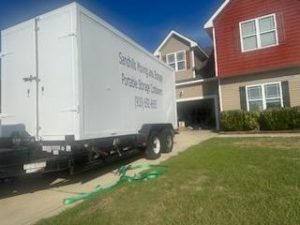Relocating to another place is a significant endeavor, especially sorting through all your possessions and packing them properly for the move. Just the thought of it can be overwhelming. The move process can be daunting, given the extensive effort required to change addresses and organize everything. Additionally, there are considerations, such as the expenses associated with hiring removalists like Sandhills Moving. Fortunately, you have access to a comprehensive list of packing tips.
Begin with Less Frequently Used Items
When packing, focus on things you won’t need before moving day. It could include seasonal items, decorative pieces, or belongings stored in less accessible areas of your home, like the attic or basement.
Selecting the Right Boxes
Choosing sturdy cardboard boxes in various sizes is crucial to accommodate different types of items. Consider the weight and size of your possessions when selecting boxes to ensure they can withstand the load without collapsing or tearing during transit.
Proper Labeling
Labeling each box with its contents and the room it belongs to can streamline the unpacking process. It ensures that boxes are placed in their designated rooms upon arrival at your new home, making it easier to find what you need.
Packing Heavier Items First
Placing heavier items at the bottom of boxes helps maintain stability and prevents fragile items from being crushed. Be mindful of weight distribution to avoid overloading boxes and causing damage.
Wrap for Protection
Wrapping each box with bubble wrap or cling film protects against bumps and jostles during transportation. This is particularly important for fragile or breakable items.
Utilize Different Box Sizes
Matching box sizes to the items being packed can maximize space efficiency and minimize shifting during transit. Larger boxes are ideal for lightweight, bulky items, while smaller boxes are suitable for heavier items to prevent overloading.
Alternative Packing Solutions
If traditional packing boxes are unavailable, consider transporting belongings using suitcases, garbage bags, or other containers. It can help make the most of available space and reduce the need for additional packing materials.
Avoid Overpacking
Overloading boxes beyond their weight limit can weaken their structure and increase the risk of damage. To ensure safe transportation, distribute weight evenly and avoid cramming too many items into a single box.
Document Electronic Connections
Taking photographs of electronic devices before disassembly can serve as a visual reference when reassembling them at your new home. This can help prevent confusion and ensure everything is connected correctly.
Color-code for Organization
Assigning boxes different colors based on the room they belong to simplifies the unpacking process. This visual cue makes identifying where each box should go easy, reducing confusion and saving time.
Photograph Box Contents
Capturing images of each box’s contents before sealing them helps keep track of belongings and facilitates locating specific items during unpacking. It can be beneficial when searching for essential items shortly after moving in.
Wrap Delicate Items Securely
To prevent breakage during transit, wrap fragile items in protective materials, such as old newspapers or bubble wrap. Cushioning the bottoms of boxes with packing material adds an extra layer of protection.
Secure Lids and Caps
Tightening lids on jars and caps on bottles prevents spills and leaks during transportation. Using adhesive tape or cling film to secure lids ensures they remain in place throughout the move.
Use Linens for Protection
Instead of packing linens separately, use them to wrap delicate items for added cushioning. It saves space and provides extra padding to protect fragile belongings.
Adhering to these crucial guidelines will help you achieve a seamless and hassle-free moving venture with packers and movers. It’s essential to anticipate, select trustworthy professionals, articulate your needs clearly, and actively participate throughout the procedure. Through meticulous planning and arrangement, your relocation will transform into a successful transition to your new residence.

